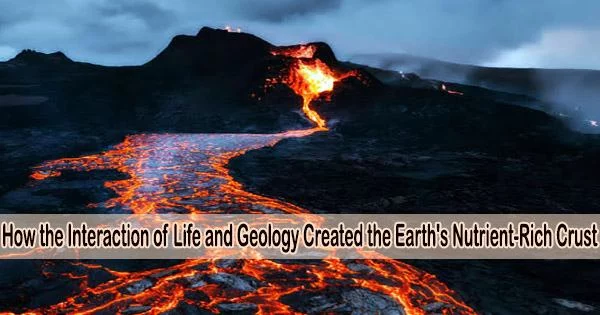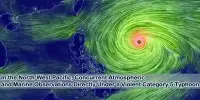Aquatic life in the oceans swiftly evolved 500 million years ago. In terms of geology, life evolved from simple, soft-bodied critters to complex multicellular organisms with shells and skeletons in the space of a blink of an eye.
Now, studies undertaken by the University of Cambridge have revealed that the diversification of life at this period also caused a significant alteration in the chemistry of the Earth’s crust, which is the top layer on which we walk and, critically, the layer that supplies many of the nutrients required for life.
The scientists discovered that crustal rocks’ concentrations of the vital nutrient phosphorous tripled after the so-called Cambrian explosion, a shift that aided in the continuous emergence of life on Earth.
“We found that ancient life had a profound impact on its environment even to the point of resetting the chemistry of the continental crust,” said Craig Walton, lead author of the research who is from Cambridge’s Department of Earth Sciences.
The researchers created a map to illustrate how the chemistry of Earth’s crust has changed over the last 3000 million years using a collection of data on ancient rocks that has been compiled by experts from around the world.
They discovered that since the Cambrian explosion, when phosphorus levels increased, the amount of this essential component in crustal rocks has been rising ever since.
“From about 540 million years onwards, we see that life transformed the composition of the upper part of Earth’s crust,” said co-author Oliver Shorttle, who is jointly based at Cambridge’s Department of Earth Sciences and Institute of Astronomy. “This shows how the development of life can influence the growth of further life, and in turn how much life a planet can go on to support.”
If oxygen did increase at that time, then more oxygen may have been available to break down deep sea biomass and recycle phosphorus to shallow coastal regions. Moving this phosphorus back towards the land meant it was better preserved in rocks that make up the continents. That series of changes were ultimately responsible for fuelling the activity of complex life as we know it.
Craig Walton
Six essential elements carbon, hydrogen, nitrogen, phosphorus, and sulfur are necessary for life in all of its diverse forms, from the enormous whale to the microscopic plankton. Phosphorus was the subject of the study since it is a mineral that is locked up in the Earth’s crust and is not only universally required for life, but also challenging to get.
“Phosphorus is also thought to be one of the nutrients that limits the amount of life that can exist in the oceans,” said Shorttle. He explained that, “by mapping out phosphorus in rocks through time, they could identify how much of this element is available to life, and, by extension, get an idea of how much life has existed on the planet.”
Contrary to nitrogen and carbon, which are essential elements of our environment, phosphorus must first be removed from rocks in order for life to utilize it. The process begins with the breakdown of rocks brought on by interactions with rainwater, which releases phosphate that is later carried into the oceans by rivers.
When phosphorus enters the water, it is broken down by plankton and eukaryotic algae, which are then eaten by larger animals at the top of the food chain.
When these organisms die, most of the phosphorus is returned back into the oceans. This efficient recycling process is a key control on the amount of total phosphorus in the ocean, which in turn supports life, “It enables us to have all the life we see around us today, so understanding when this process started is really key,” said Walton.
But, all of this biological reprocessing power relies on oxygen. The bacteria that break down decaying organic matter and release phosphorus back into the waters are fed by this.
The increase in phosphorus in rocks may have been caused by an increase in oxygen that occurred around the time of the Cambrian explosion, according to the researchers.
“If oxygen did increase at that time, then more oxygen may have been available to break down deep sea biomass and recycle phosphorus to shallow coastal regions,” said Walton. Moving this phosphorus back towards the land meant it was better preserved in rocks that make up the continents. “That series of changes were ultimately responsible for fuelling the activity of complex life as we know it,” said Walton.
But, he added, “It’s tricky to unravel the sequence of events whether complex life evolved in part because of increased supplies of oxygen and phosphorus to start with, or if they were in fact fully responsible for increasing availability of both, is still a controversial topic.”
Walton and the crew are currently looking into the precise causes and timing of this phosphorus enrichment in the crust.
















